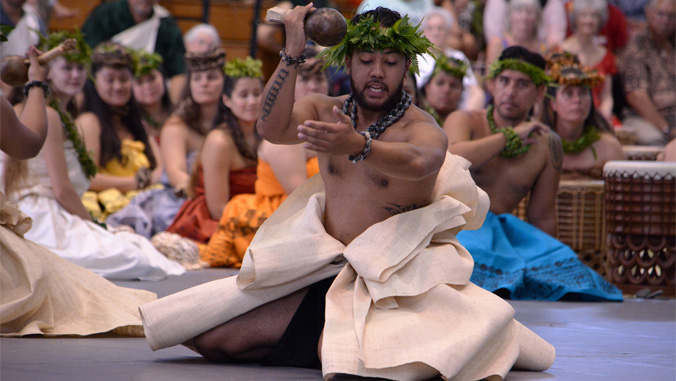Research has shown that Indigenous peoples are often disproportionately affected by epidemics and other crises compared to Hawaiʻi non-Indigenous counterparts. During the COVID-19 pandemic, concerns for the health and well-being of Native Hawaiian students, faculty and staff at the University of Hawaiʻi struck a chord with UH presidential appointed Indigenous education work committee Hawaiʻi Papa O Ke Ao (HPOKA).
“Committee members shared that folks on their campus were feeling isolated, disconnected and depressed due to the psycho-social, emotional and economic impacts of the COVID-19 pandemic,” said UH West Oʻahu Chancellor Maenette Benham during a HPOKA video address.
To help foster Indigenous well-being, HPOKA and the UH Office of the President unveiled a cultural webinar series showcasing music, dance and storytelling. He Ukana Aloha Kā Kīlauea is a free bi-monthly, yearlong series hosted by sources from across UH’s 10 campuses. Hawaiʻi Community College will be featured on the series on October 14 and 28. Hawaiʻi CC Professor Taupōuri Tangarō will lead a presentation on hula noho (hula danced in a seated or kneeling position). Tangarō, a HPOKA committee member, first proposed the idea of a storytelling series to the work committee as a form of nourishment to the Native Hawaiian community during this challenging time ushered in by the pandemic. Each campus will have the opportunity to present through June 2021.

- November 4 and 25 (UH Mānoa)
- December 9 and 23 (UH West Oʻahu)
- January 13 and 27 (Kauaʻi CC )
- February 10 and 24 (UH Hilo)
- March 10 and 24 (Honolulu CC )
- April 14 and 28 (Windward CC )
- May 12 and 26 (Kapiʻolani CC )
- June 9 and 23 (Leeward CC )
In September, presentations from UH Maui College kicked off the series which featured traditional tales about Haʻehaʻekū, a giant believed to have resided in the valley of Waikolu on Molokaʻi. The story spotlights how the giant cared for ʻuala or sweet potato and calls attention to an important lesson about why it’s important to think of others. During the segment, viewers also learned how to make Hawaiian dessert kōʻelepālau using the starchy vegetable.
In January 2012, HPOKA set goals and objectives to address the higher education needs of Native Hawaiians through three pathways; leadership development, community engagement and Hawaiian language and cultural parity.
For more information, go to the He Ukana Aloha Kā Kīlauea website.


